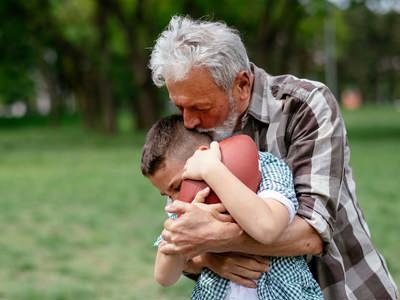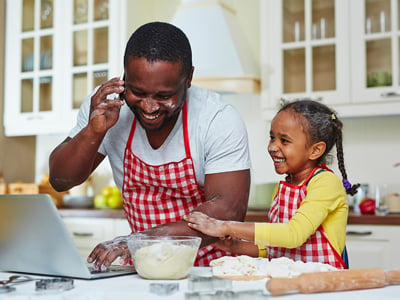- Doctors & Departments
-
Conditions & Advice
- Overview
- Conditions and Symptoms
- Symptom Checker
- Parent Resources
- The Connection Journey
- Calm A Crying Baby
- Sports Articles
- Dosage Tables
- Baby Guide
-
Your Visit
- Overview
- Prepare for Your Visit
- Your Overnight Stay
- Send a Cheer Card
- Family and Patient Resources
- Patient Cost Estimate
- Insurance and Financial Resources
- Online Bill Pay
- Medical Records
- Policies and Procedures
- We Ask Because We Care
Click to find the locations nearest youFind locations by region
See all locations -
Community
- Overview
- Addressing the Youth Mental Health Crisis
- Calendar of Events
- Child Health Advocacy
- Community Health
- Community Partners
- Corporate Relations
- Global Health
- Patient Advocacy
- Patient Stories
- Pediatric Affiliations
- Support Children’s Colorado
- Specialty Outreach Clinics
Your Support Matters
Upcoming Events
Colorado Hospitals Substance Exposed Newborn Quality Improvement Collaborative CHoSEN Conference (Hybrid)
Monday, April 29, 2024The CHoSEN Collaborative is an effort to increase consistency in...
-
Research & Innovation
- Overview
- Pediatric Clinical Trials
- Q: Pediatric Health Advances
- Discoveries and Milestones
- Training and Internships
- Academic Affiliation
- Investigator Resources
- Funding Opportunities
- Center For Innovation
- Support Our Research
- Research Areas

It starts with a Q:
For the latest cutting-edge research, innovative collaborations and remarkable discoveries in child health, read stories from across all our areas of study in Q: Advances and Answers in Pediatric Health.


Overcoming Loneliness: How to Help Kids Build Social Connection

Friendships are essential for helping kids learn social skills and maintain a sense of belonging. Yet, research shows that today's children and teens are lonelier than ever. Social media, lingering effects from school closures due to COVID-19 and a reliance on virtual interactions have made it harder to connect with others in a meaningful way. However, fulfilling, in-person friendships remain both achievable and important.
If you’ve noticed that your child is experiencing loneliness, or you want to help them build more meaningful connections, experts at Children’s Hospital Colorado can help. Learn more about what loneliness looks like, why peer connections are so important and how parents can effectively and appropriately intervene.
Social isolation and loneliness
Babies learn about bonding from interacting with their parents, and this sets the foundation for friendships and partnerships throughout their lives. Yet these bonds alone aren’t enough to sustain a child as they grow, and without strong social connections, children can become lonely.
Loneliness is a subjective internal state that occurs when a person longs for more meaningful social connections than they currently have. In comparison, social isolation is when a person lacks access to friendships, communities or other peer groups that offer support and connection.
For parents and caregivers, it’s important to understand this difference. A child may belong to a social group but still feel lonely, because loneliness looks different for everyone and we all have our own needs when it comes to friendship.
“Loneliness isn’t just about the number or the frequency of social connections,” says Children’s Colorado’s licensed clinical psychologist Sarah Kennedy, PhD. “Some people may have a number of close friends and still feel lonely, whereas other people might be completely fine with having two close friends.”
That’s why it’s more accurate to understand how a child or teen feels about their connections, rather than how many friends they seem to have. Ask yourself these questions about your child:
- Does their current peer group create a sense of fulfillment and belonging?
- Do they wish they had more trusted connections to confide in?
These types of questions can help a parent assess whether a child may struggle with loneliness.
The epidemic of loneliness
In May 2023, U.S. Surgeon General Vivek Murthy, MD, released a 2023 advisory titled, “Our Epidemic of Loneliness and Isolation." This report addresses the mental, physical and societal impacts of being chronically lonely, stating that loneliness is “associated with a greater risk of cardiovascular disease, dementia, stroke, depression, anxiety and premature death.”
The Surgeon General’s advisory emphasized that these negative health effects are similar to smoking up to 15 cigarettes a day. While that statement can feel shocking (especially when we’re talking about kids and teens), the comparison is meant to stress how harmful the unseen effects of loneliness can be.
Additionally, the report names loneliness risks specific to youth: Young adults are twice as likely to be lonely compared to adults over 65, and rates of loneliness among those under 65 have increased annually for almost 50 years.
Why does social connection matter for kids?
It’s impossible to fully understand the epidemic of loneliness in children without first learning about the importance of social connection.
As children grow up and move into adolescence, social connection plays an increasingly important role in their well-being. That’s because kids tend to rely more on their friends for emotional support. Without those trusted connections, kids may feel that they don’t have anyone to confide in.
"Social connection also allows kids to get some practice with social relationships,” Kennedy says. “It's really hard to know how to form strong peer relationships and social connections if you don't gain those skills.”
On a human level, social connection has always been fundamental to survival. In fact, research shows that our brains are wired to expect positive social interactions with others, because other people help us meet our basic needs. To our ancestors, this meant that other people in our group helped us gather food, create shelter, protect us from threats and mitigate risk. As humans evolved, so did the role of interpersonal relationships. Most people would agree that a strong community still helps ease the burdens of life; however, it also provides us with immeasurable joy and connectedness.
Technology and loneliness
While loneliness skyrocketed during the isolation period of COVID-19, when many children were separated from their school peers, the loneliness epidemic isn’t entirely new. The Surgeon General’s 2023 report states that one in two American adults already struggled with loneliness before the pandemic, and that social isolation has steadily increased since 2003.
“In that same period, we've also seen increases in things like depression and anxiety and self-harm and suicidal ideation,” Dr. Kennedy says.
These mental health challenges have continued to rise alongside loneliness, begging the question: why?
Dr. Kennedy says it could be that young adults today are more reliant on social media and virtual connections for social interactions, which may be a contributing factor to loneliness. After all, social media rarely fosters meaningful connections that can support a person who’s feeling lonely.
“With social media, a lot of people can have a number of shallow social connections where they have maybe a superficial or acquaintance-based relationship,” Dr. Kennedy says. “But it's not necessarily somebody that they can go to for support if they're struggling or if they're looking for help with coping.”
It has also become more common for teens to communicate via text message rather than on the phone or in-person. This can make it harder for young adults to fully express themselves and share their thoughts and feelings with trusted friends, which in turn can worsen a sense of loneliness. In the same way that social media friendships cannot take the place of true in-person friendships, shortened texting conversations can’t always take the place of meaningful conversations.
In contrast, social media may also offer connection and support for some kids who struggle to find a safe community in school. Kids and teens can use social platforms to connect with peers who live in other places based on shared interests, which may in turn foster friendships and reduce loneliness. Therefore, social media use doesn’t always lead to loneliness. Rather, it’s a matter of how your child is using such tools, and how those digital interactions make them feel.
Childhood illness and loneliness
Children and teens with long-term illnesses may also experience loneliness as a result of lengthy hospital stays.
“Teens in particular are in a developmental stage that focuses on their identity and how they fit into the world, so being frequently ill or hospitalized can affect this identity and how they see themselves,” explains Sarah Scott, certified child life specialist and medical dog program coordinator at Children’s Colorado. “Loneliness might be related to feeling different from their peers, or not knowing how to best relate to friends because they have faced such different challenges so far in their life."
Fortunately, part of the role of a child life specialist is to provide experiences and spaces that help kids socialize with others. This happens in the Tween Zone at Children’s Colorado, which has games, movies and creative activities where kids can connect, play and socialize.
“Play is often how teens express themselves, ask questions and process what they have seen or experienced,” Scott says. “I’ve watched kids and teens connect with peers in these spaces, and it helps them cope and feel less alone.
Additionally, trained medical dogs, such as those in the Medical Dog Program at Children’s Colorado, may help make hospital experiences more positive for kids.
"We know that animals can impact coping, processing and even healing for those experiencing an illness,” Scott adds. "Dogs have a way of connecting with children and teens that humans might not be able to do.”
For example, medical dogs can encourage kids to take a walk for the first time after surgery, or simply provide comfort during a scary or stressful procedure.
“Animals are more than just furry companions,” Scott says. “I believe they help us feel safe, seen and not alone.
Neurodiversity and loneliness
Research shows that children with autism spectrum disorder (ASD) are at an increased risk of loneliness. That’s because autism and other types of neurodiversity can make it harder to engage in social interactions and create meaningful friendships.
Fortunately, there are some commonalities among neurodiverse kids who’ve established close social connections. For example, scientific findings demonstrate that neurodiverse kids fared best in friendships where they were accepted completely for who they were, rather than being expected to adhere to social norms. In other words, their behavior, personality and overall sense of self were normalized by their peers.
For parents or caregivers of a child with neurodiversity, encouraging them to be proud of who they are can help them navigate social interactions until they discover healthy relationships with people who accept them. Moreover, all parents and caregivers can teach their kids empathy and compassion, so they’re more likely to accept and embrace those who are different from them.
How to identify loneliness in children and teens
In younger kids, loneliness can manifest as creating imaginary friends, seeming clingy to parents and siblings and acting self-conscious and timid around other children.
According to Dr. Kennedy, teens may be lonely if they’re spending a lot of time isolating themselves, such as staying in their room or at home instead of going out with friends. Parents should also watch for changes in a child’s social life. “If before, they used to have a close circle of friends and they would do things with those friends outside of school, and there's been a change in their social functioning or social connectedness, that might be a sign of concern,” Dr. Kennedy says.
If children don’t talk about their friends or other relationships with peers, it could be a sign that they are lonely. Similarly, poor self-image and talking bad about oneself is also a sign that someone may be struggling to fit in and create satisfying friendships.
Also watch out for signs of mental health concerns, such as anxiety and depression, which are closely tied to loneliness. For example, kids struggling with depression may lose passion for their interests or feel hopeless, like things aren’t going to work out, so they might stop engaging in peer activities. Be sure to listen and create room for conversation. "Sometimes, kids will say outright that they're feeling lonely or that they don't have enough friends or wish they had more friends,” Dr. Kennedy says.
How to deal with loneliness in kids
Helping kids cope with loneliness is a balancing act. Parents and caregivers must approach the situation thoughtfully before they intervene, because kids may have very different responses depending on their age and development.
“If we're talking about a parent of a younger child, it may be helpful and appropriate for that parent to try to help that child reconnect socially with peers,” Dr. Kennedy says. “That might involve the parent reaching out to other parents of peers in that child's class and facilitating some sort of activity.”
While this is appropriate for a student in elementary school, tweens and teens might be embarrassed by this kind of parental involvement — and it could make them retreat even more.
For kids in middle and high school, try talking to them to better understand their needs and goals around social connection. Do they feel their social needs are being met? Do they wish they had more friends?
“Ask a lot of questions and empathize to identify how to support that teenager in a way that feels comfortable,” Dr. Kennedy says. “Help them really think through and problem solve other ways that they can socially connect.”
For example, parents might help teens brainstorm activities, events or other avenues for making meaningful friendships. Another way to help kids with loneliness is to connect them with a therapist who may be able to help the child develop social skills, practice empathy and continue brainstorming ways of connecting.
Lastly, fostering a child’s relationships with other adults, including grandparents, coaches, teachers and mentors, can ensure they have a supportive presence in their lives aside from the parents and caregivers.
Modeling healthy relationships
Parents can also model healthy relationships to demonstrate the importance of social connection for kids of any age.
"Modeling is one of the core ways that kids and teenagers learn about all kinds of things — how to regulate emotions; how to have healthy social relationships,” Dr. Kennedy says. “A parent talking about some of their own social relationships in a teen-appropriate way, and talking about different ways that they connect, could be helpful.”
According to the Surgeon General’s report, parents and caregivers can serve as models by staying in touch with friends, neighbors and extended family, participating in community events and practicing constructive conflict resolution in their own relationships. It's also helpful for kids to see parents and caregivers socializing without technology and maintaining a healthy distance from social media.
Another idea is to model asking for help and support from friends. Talking to your kids about how you asked a friend for help, or how you stood by a friend in need, can not only teach kids how to ask for help themselves, but also that it’s OK to do so.
"Kids worry a lot about being a burden on their peers,” Dr. Kennedy says. “They may need social support, but they're reluctant to ask for it because they don't want to be perceived as being a burden, or they feel like their friend's got enough problems as it is.”
A helpful way to frame such conversations is that it often feels good to be there for our friends by listening to them and supporting them through struggles. In other words, asking for help from a friend is also helping them.
Overall, the best way to help your child with loneliness is to advocate for their needs, pay attention to their social interactions and help them find a community to which they belong.



 720-777-0123
720-777-0123






